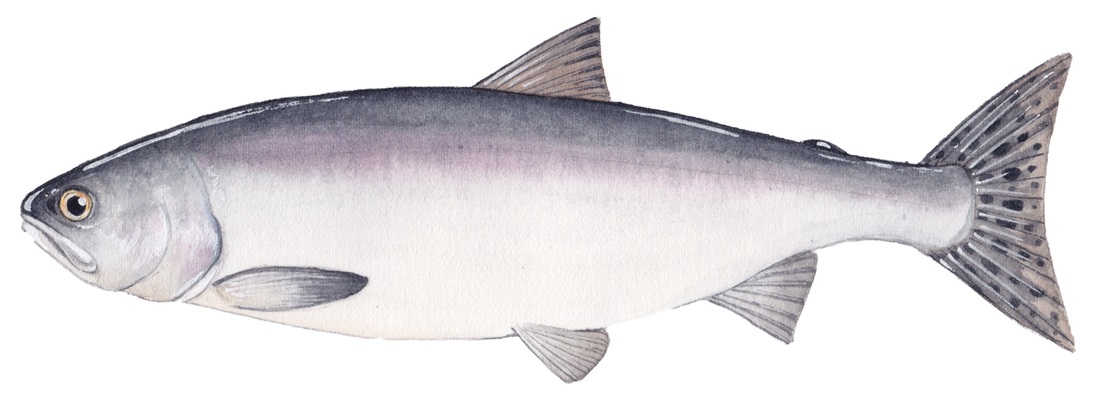|
"You have to finish a fish? Did I hear that right?" my friend asked when I told her why I was running late. Yep, I have been painting fish every day since I moved to Switzerland. This latest batch of fish will accompany a new research paper on fish evolution, and this project follows a previous research paper by the same group that had me painting around 65 different fish species. The greatest part about working with the Alfaro lab at UCLA is that my painting assignments include some of the world's weirdest, rarest, and most beautiful ocean fish. That also means it can be a bit challenging to figure out how to accurately represent fish that have rarely been photographed. Each species requires a lot of research in order to make sure the illustrations depict accurate morphology and coloration. I start with Fish Base online, a website that includes descriptions, illustrations, and photos of fish species from around the world. Many of the photographs are of dead fish, which works well for understanding the anatomy, but results in dull or false coloration and often damaged fins. Further online research helps provide live photos of the fish in most cases. One of the most challenging fish to paint was the tube-eye fish, Stylephorus chordatus. This species is a deep sea fish that looks like something out of an alien movie. It is rarely seen and there are very few photographs. My illustration had to be based off of the very limited number of illustrations and photographs I could find. I did not have a clear sense of what the coloration should be, but some of the deep sea researchers I asked described it as silvery-black. Most of the fish species are much more straightforward. For example, there are endless photos online of pink salmon (Oncorhynchus gorbuscha), and I have the advantage of having caught salmon recreationally for most of my life. I had a pretty good idea of what it should look like. For all of the fish paintings, I always start with a number of reference photos to create the most accurate sketch of the animal. After sketching on the computer, I then print out the sketch and refine it on paper before transferring it to watercolor paper using carbon paper. I can then use layers of watercolor followed by white gel pen to create the coloration, texture, and highlights. Here is only a small sampling of the 80+ fish that I have painted so far. Stay tuned for links to the research publications once they come out. They are sure to make a big splash!
0 Comments
Your comment will be posted after it is approved.
Leave a Reply. |
Categories
All
|
Proudly powered by Weebly









 RSS Feed
RSS Feed